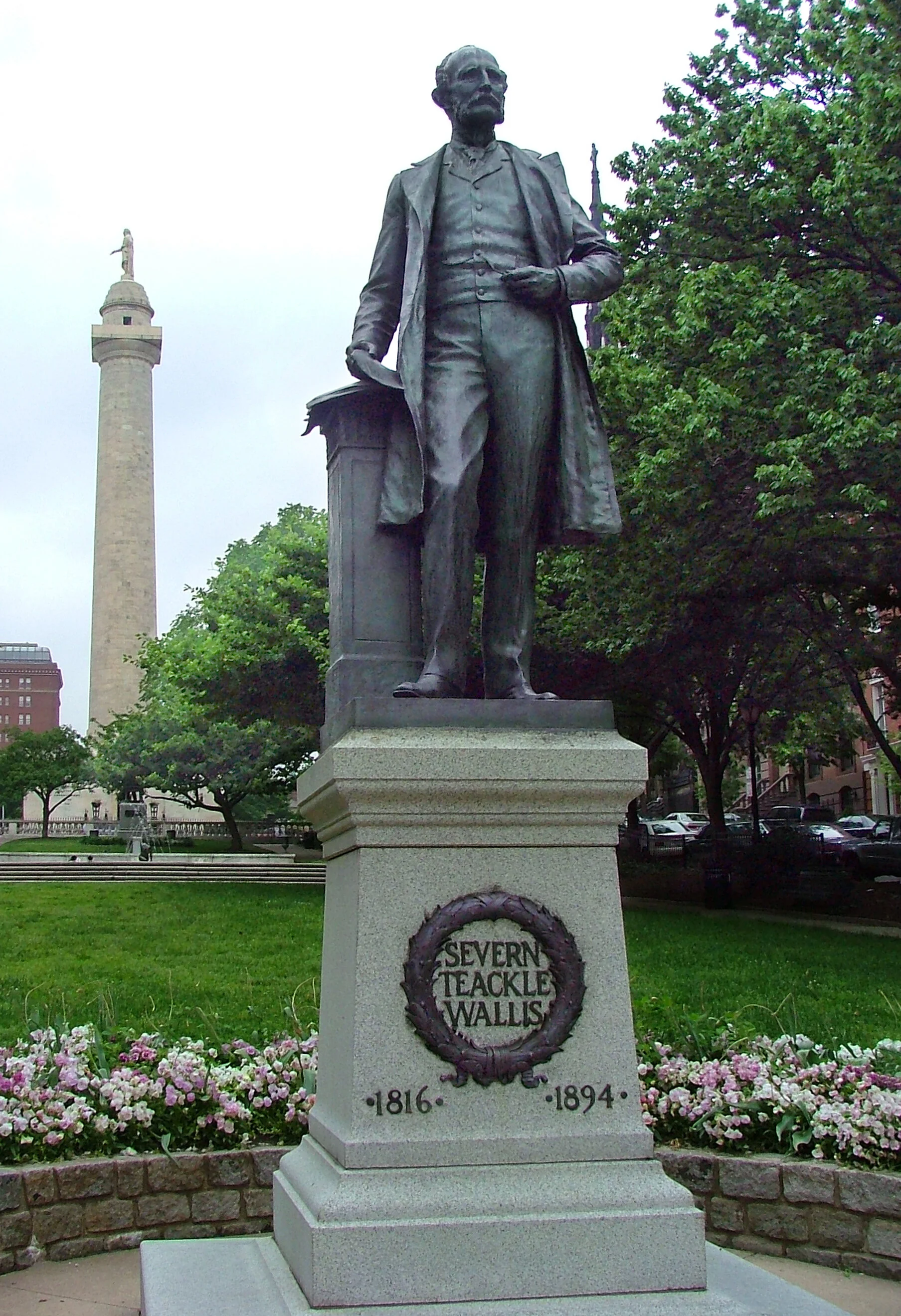Severn Teackle Wallis Monument (Laurent Honoré Marqueste)
Severn Teackle Wallis (1816-94) was a prominent lawyer in Baltimore during the nineteenth century. He began his brilliant career after being admitted to the bar in 1835, at the age of 19. Later recognized as a wit, a reformer, a poet, a linguist, and an orator, he was Baltimore's leading citizen for almost half a century. His court appearances brought out many colleagues, who would come to hear him argue some obscure point of law as if he had made a lifelong study of it. He could have been elected governor or senator or been appointed a cabinet officer, but he was content to remain a local figure. When the Municipal Art Society of Baltimore City decided to erect statues to men who had played an important part in Maryland history, they chose to commission monuments first to John Eager Howard and next to Wallis, noting that Wallis had laid the foundation for civil service reform. In erecting this monument, the society also underscored its belief that "direction is everything, distance nothing," for Wallis died before his reform goals were reached.
Wallis, who remained a bachelor all of his life, devoted much of his energy to the arts. He was a trustee of both the Peabody Institute and the Maryland Institute. He was in fact the juror for an exhibition at the Maryland Institute in 1851 in which William Rinehart first entered a piece of sculpture. Wallis gave Rinehart first place and remained a patron and strong supporter of Rinehart's throughout his career. He was the driving force on the committee that commissioned Rinehart to create a monument to Roger B. Taney, and he spoke at the dedication of that statue in Annapolis in 1872. A replica of the statue was given to the city and stands in the north square.
Laurent Honoré Marqueste was one of the most distinguished French artists of his day. He was born in Toulouse and died in Paris. He won the Prix de Rome in 1871 and made his Salon debut in 1874 in Paris. Thereafter, Marqueste was awarded many first prizes in expositions in France and across Europe. His reputation was well established. Henry Walters suggested him for this commission, and negotiations were carried out in Paris by his fell ow Baltimorean, art collector and agent George A. Lucas.
To complete a full standing portrait of Wallis, Marqueste was sent a suit that had belonged to Wallis and a photographic portrait of him. No detail was unimportant. Wallis is shown standing, with his weight on his left leg, his right leg slightly bent at the knee and placed forward to the edge of the base. He is elegantly dressed in his suit and a knee-length coat. His right hand rests on a pedestal, on which his papers are spread. He looks to his left and off to the distance. His moustache, muttonchop whiskers, and slightly bald head are prominent features.
This monument, originally sited in the south square, was moved to its present location in 1920.
Source: Kelly, Cindy, Outdoor Sculpture in Baltimore: A Historical Guide to Public Art in the Monumental City, Johns Hopkins University Press, 2011.


